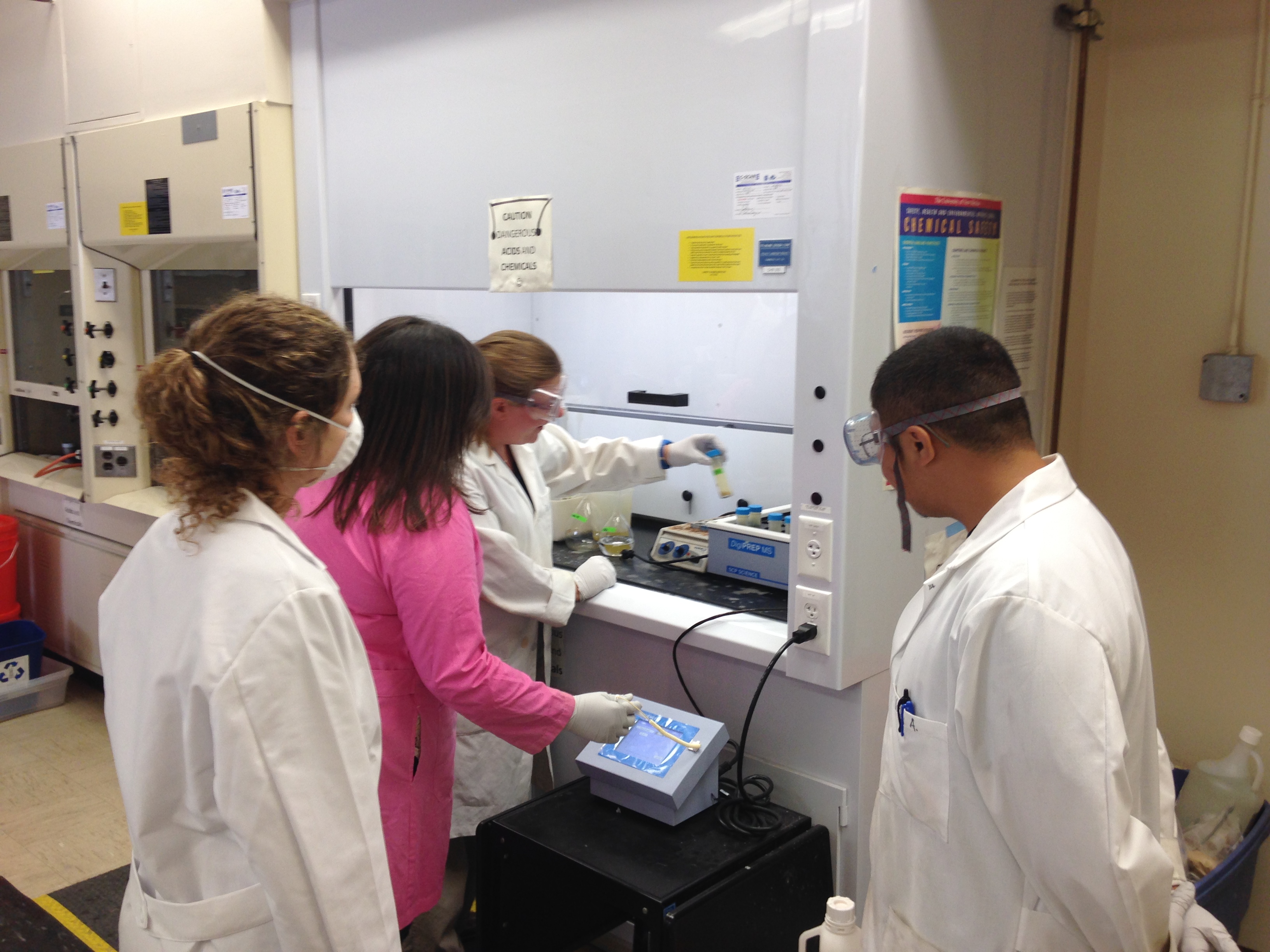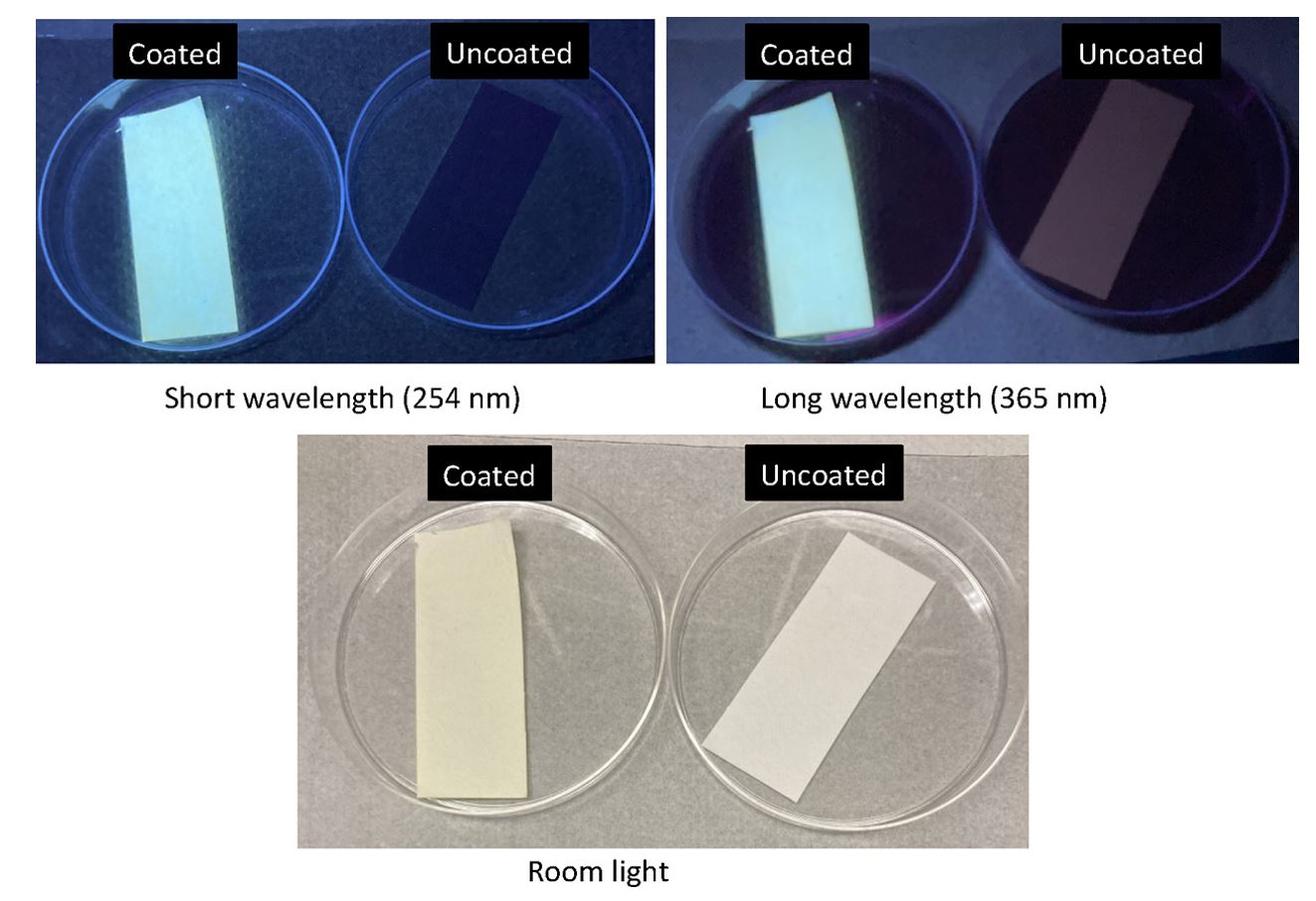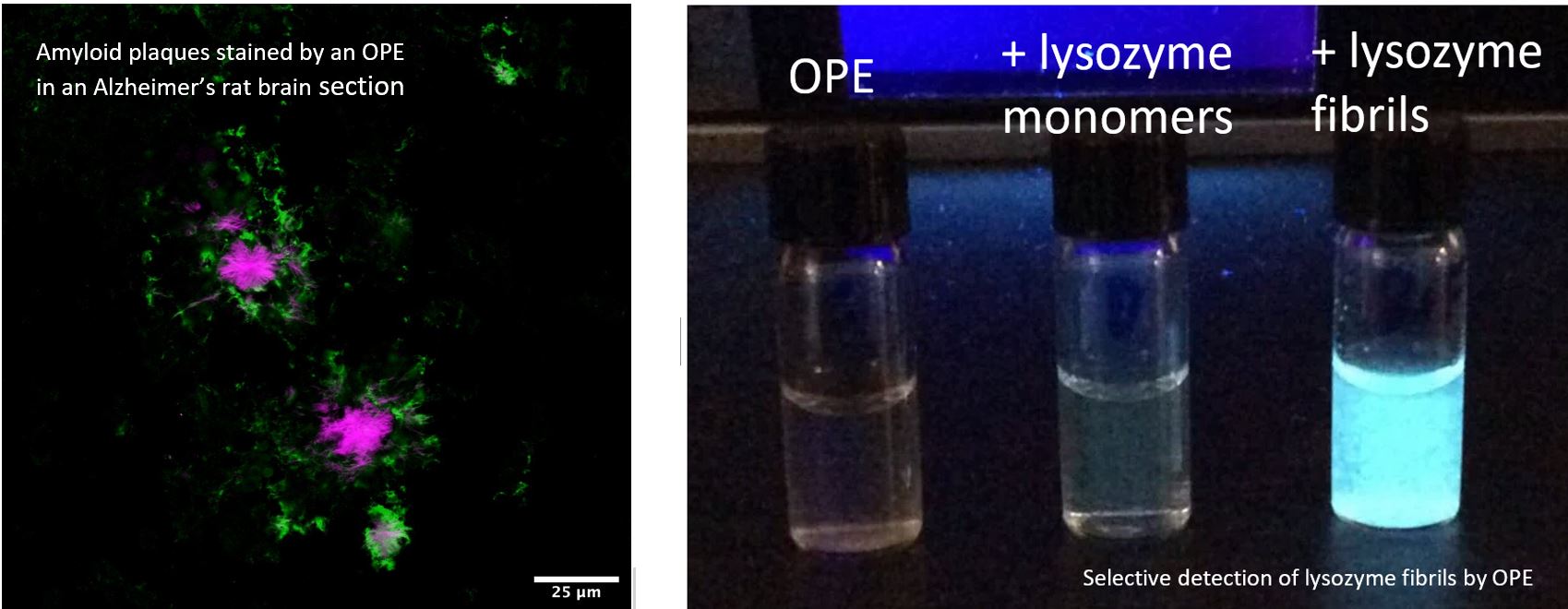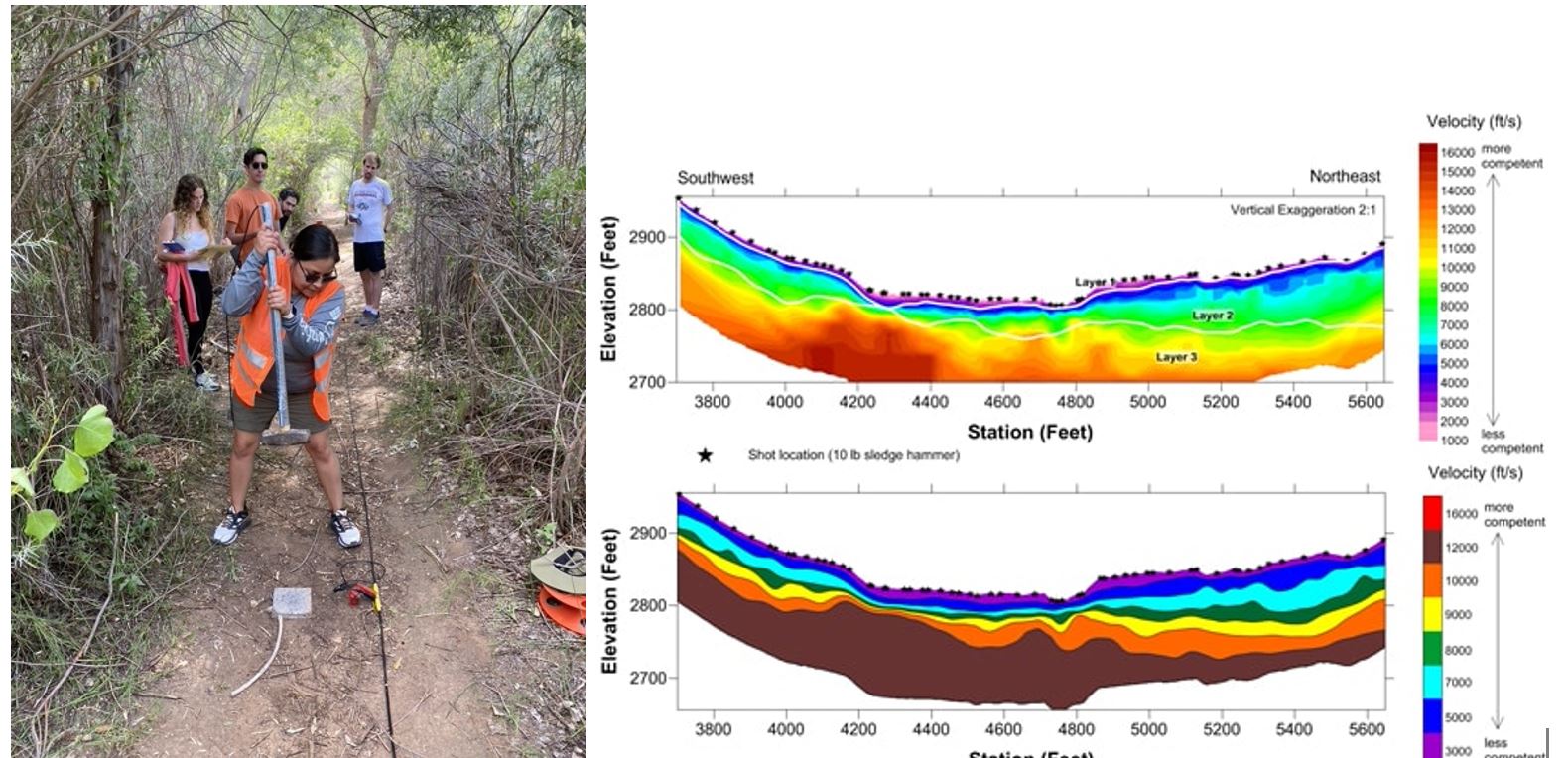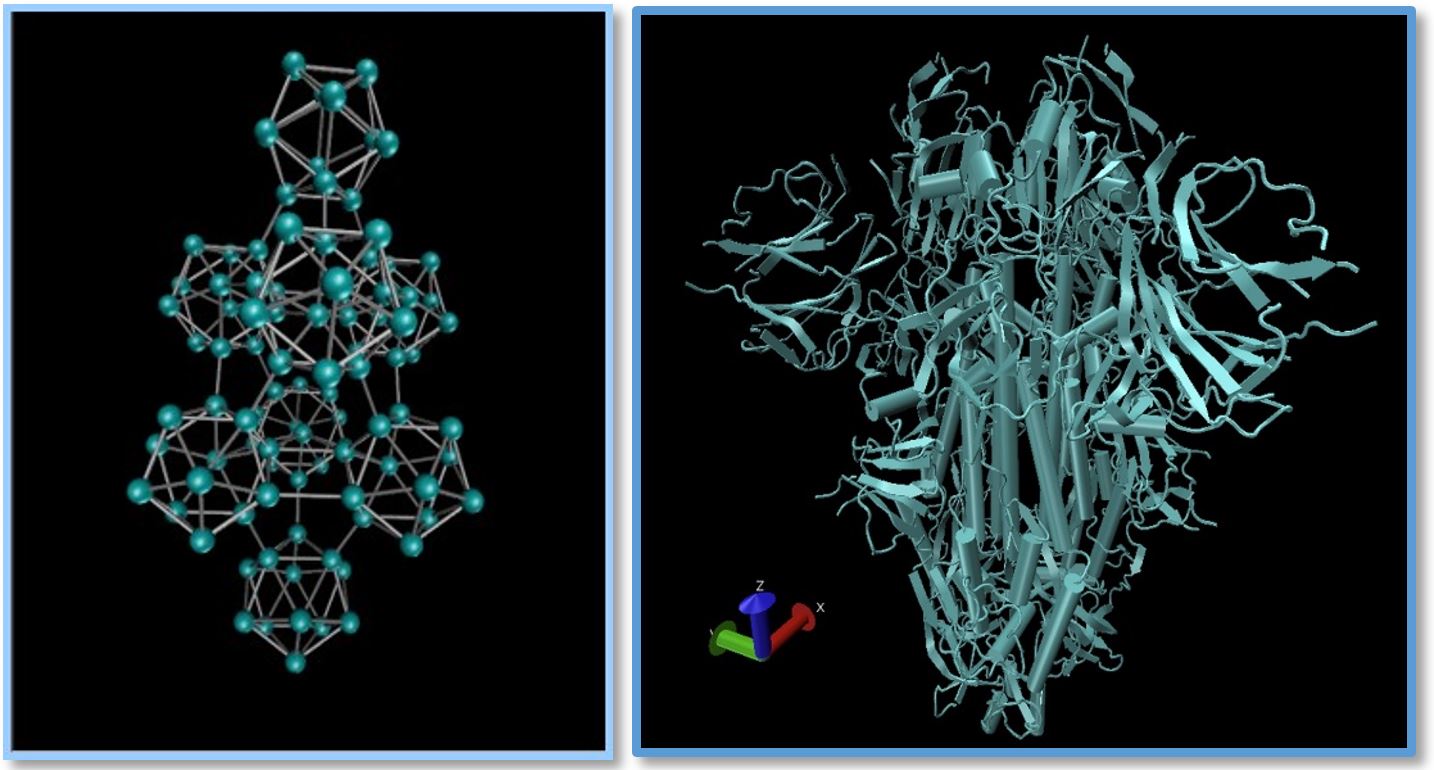Project Descriptions
ROSE Labs and Principal Investigators
1. Photochemistry and Laser Spectroscopy of Molecules and Materials
PI: Prof. Jeffrey Rack (Chemistry & Chemical Biology; Laboratory for Magneto-Optical Spectroscopy)
Lab webpage
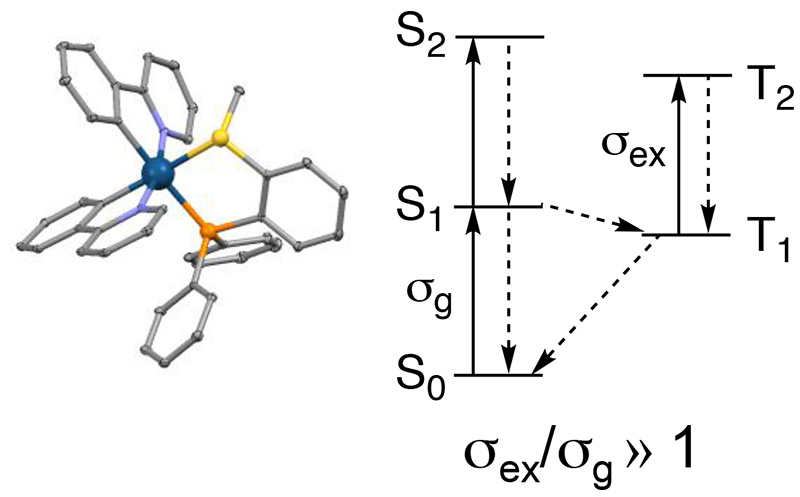
Research in the Rack Group is focused on the development and study of photoactive compounds and materials for applications in quantum information science and optical limiting devices. We make a series of laser measurements ranging from femtoseconds (10–15 s; a billionth of a millionth of a second) to hundreds of microseconds (10–6 s; a millionth of a second) to understand how these materials respond to light. In one project (funded by the Army Research Laboratory), we prepare materials that exhibit optical limiting properties, which are used to protect light detectors, such as cameras. This project involves the synthesis of photoactive compounds, their incorporation within polymeric materials, and/or laser investigations into how these materials react with light. In another project (funded by the National Science Foundation), we synthesize compounds and materials that change color when exposed to light. These materials can be used for information storage and other applications. We are interested in the details of how this reaction occurs, and how we can use this change to affect other properties, such as magnetism. There are many opportunities in these projects, and we are always looking for new people to help meet our research goals.
2. Understanding the Nature of Halide-Based Solid State Electrolytes and Solid State Batteries
PI: Prof. Dongchang Chen (Chemistry & Chemical Biology)
Lab webpage
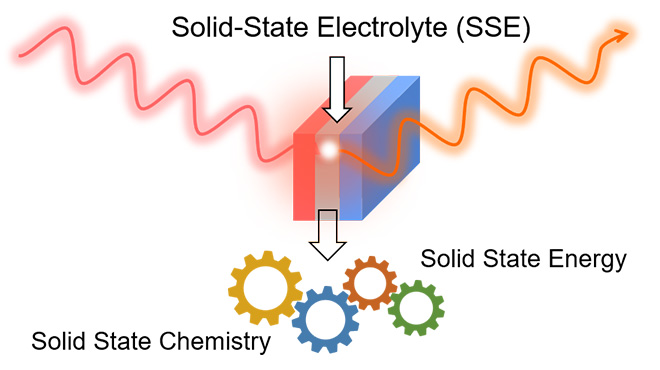
The bloom of technologies in the recent decades, represented by various types of smart personal electronics and electrical vehicles, hinges on the immense developments on batteries. Battery technologies evolved from heavy and bulky lead-acid type to state-of-the-art Li ion batteries, the game changer of the energy storage industry. However, after years of global commercialization, drawbacks of Li ion batteries have come forth. The most significant and well-known one is their notorious safety issues, due to the extremely high volatility and flammability of liquid battery electrolytes. The grim safety issue stimulated a new battery technology, solids tate batteries (SSBs). SSBs use inorganic solid state ionic conductors as solid state electrolytes (SSEs), which intrinsically eliminates the issue of volatility and flammability. In this study, we will establish a new experimental platform to probe the correlation between chemical composition, intriguing structural characteristics, and unique functionalities for a new emerging family of halide-based SSEs. The research outcomes of this study can be feasibly utilized in development of materials technologies that convert scientific research to real-world applications.
3. Probing the Universal Rules for Fast Li Ion Storage
PI: Prof. Dongchang Chen (Chemistry & Chemical Biology)
Lab webpage
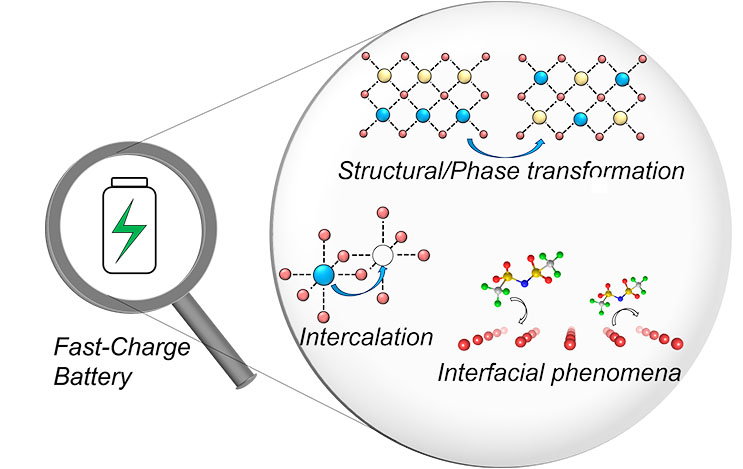
While Li ion batteries (LIBs) are the most widely used energy storage devices, current LIB materials are far from perfect. Most of LIBs electrode materials suffer from unsatisfactory rate capability (i.e. cannot fully charge/discharge in a short time), which greatly limits their application scope. Our group aims to develop a scientific solution for solving this problem from a chemist’s perspective. In this study, we will conduct holistic fundamental studies on a series of model transition metal oxides to unravel the factors that are critical for desired rate capabilities. The study will span a wide range of principles in fundamental chemistry, various analytical methods, and diverse techniques related to real-world engineering. We expect the study will bring up an overarching understanding of the nature of fast-charge battery electrode materials and put forward a material whose rate performance surpasses that of available electrode materials. It will render a significant impact on development of renewable energy of New Mexico and realization of the electrified transportation.
4. Exploring the Structures and Dynamics of Proteins Using Computer Simulations
PI: Prof. Yi He (Chemistry & Chemical Biology; Department of Internal Medicine, UNM Health Sciences Center)
Lab webpage
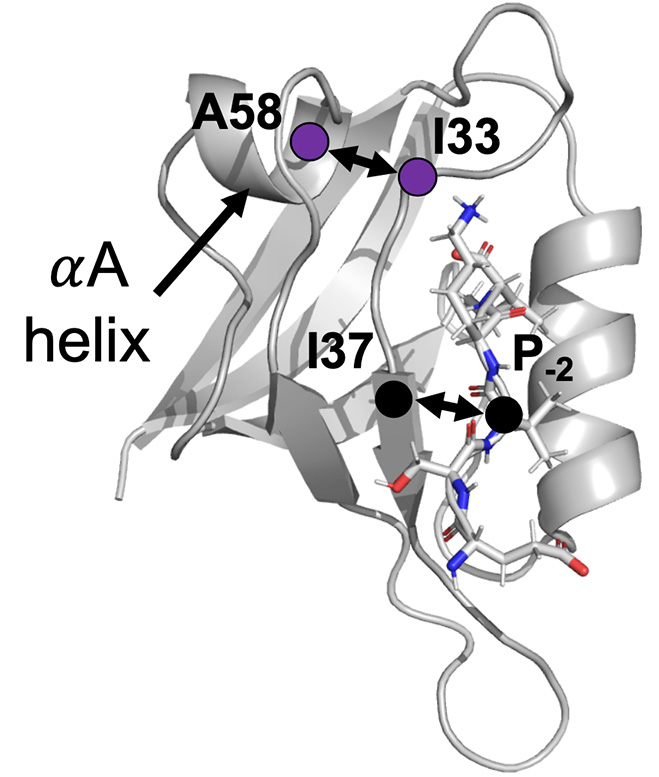
Substance use is a wide-reaching concern in the United States today and heavily contributes to the burden of disease in our nation. Here at home, New Mexico has the highest alcohol-related death rate in the nation and ranks 17th in drug-related deaths. Furthermore, the use of drugs and alcohol lead to systemic social problems in New Mexico. Substance use is related to systemic social problems, including health, criminal justice, education, and social welfare. In recent years, a promising solution to this wide-reaching problem has emerged through a unique human protein – Protein Interacting with C Kinase-1 (PICK1). PICK1 is a scaffolding protein that is one of the key regulators in biological cycles related to substance use disorders. Our study utilizes computer simulations/modeling to provide information that is key to assist drug developers in designing a small molecule inhibitor to target PICK1 and ultimately support individuals suffering from the effects of substance use disorders.
5. Making Unnatural Natural Products
PI: Prof. Mark Walker (Chemistry & Chemical Biology)
Lab webpage

Chemicals produced by living systems, or natural products, have had a tremendous impact on human health. For example, nearly one third of all small molecule drugs approved by a regulatory agency over the past nearly four decades have been natural products or derivatives of natural products, including over 70% of antibiotics and 40% of anticancer drugs. While very useful molecules have been identified among the hundreds of thousands of natural products that have been characterized to date, genome sequencing efforts over the past decade and a half have revealed that we have only characterized the products of a small fraction of the biosynthetic pathways that exist in nature. The products of these pathways have the potential to greatly impact the diagnosis and treatment of disease, and it is critical that we develop new approaches to accelerate the identification and characterization of new natural products and natural product-like compounds.
This project will focus on using molecular biology and biochemical techniques to characterize enzymes that are involved in the production of new types of natural products.
6. Molecular Basis of Niemann-Pick C1 Disease
PI: Prof. William S. Garver (Chemistry & Chemical Biology)
Webpage
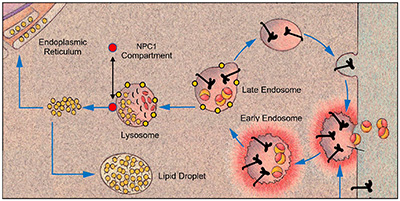
Niemann-Pick C1 (NPC1) disease is a complex genetic and metabolic disorder originally identified in the Rio Grande Valley region of New Mexico. To date, we have identified a large number of rare NPC1 gene pathogenic derived variants responsible for homozygous recessive NPC1 disease and heterozygous dominant adult obesity and/or type 2 diabetes. We have determined that the NPC1 protein regulates the transport of low density lipoprotein (LDL) derived lipids (cholesterol and fatty acid) from late endosomes/lysosomes into the cytoplasm and has an undefined role in maintaining cellular, tissue, and whole-body energy metabolism. The current focus of our research program is to develop a more accurate and sensitive NPC1 protein functional assay to diagnose patients and enhance screening of potential therapies using patient fibroblasts and a humanized mouse model. The laboratory activities include performing computational genomics research, human cell culture techniques, and measuring offending metabolites (cholesterol and fatty acid) responsible for the spectrum of NPC1 diseases.
7. Spectroscopic Analysis of Electron Transfer to Molecular Dopants
PI: Prof. Terefe G. Habteyes (Chemistry & Chemical Biology)
Lab webpage
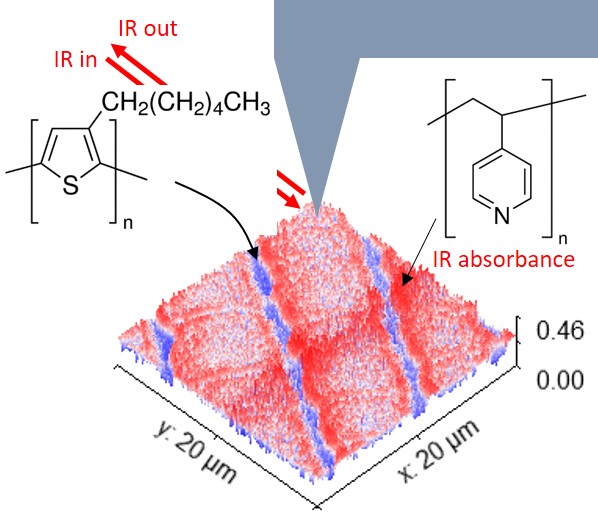
The research in Habteyes group is focused on application and development of scattering-type near-field scanning optical microscopy (s-SNOM) for nanoscopic infrared imaging of chemical heterogeneity, single particle spectroscopy, surface enhanced Raman spectroscopy (SERS), plasmon enhanced photocatalysis, and molecular doping of organic semiconductors. The microscopy and spectroscopy capabilities are built on enhanced light-matter interaction due to electromagnetic fields localized on nanoscale (a human hair is about 50,000 nm) objects. The s-SNOM technique uses a sharp conical probe as an optical antenna to achieve spatial resolution on the order of 10 nm, which otherwise will be limited to 200 nm due the diffraction property of light. On the other hand, localized surface plasmon resonances of metal nanoparticles (smaller than 100 nm) can be used for enhancing the interaction of molecules with electromagnetic radiation, thereby enabling single molecule detection to investigate a variety of surface processes including surface photochemistry, charge transfer and thermal effects. The summer project involves investigating surface-molecule charge transfer to obtain fundamental understanding of molecular dopants that may have application in organic electronics such as solar cells.
8. Neuroimmune Responses in the Olfactory-Brain Axis
PI: Prof. Irene Salinas (Biology; Center for Theoretical and Evolutionary Immunology (CETI))
Lab webpage
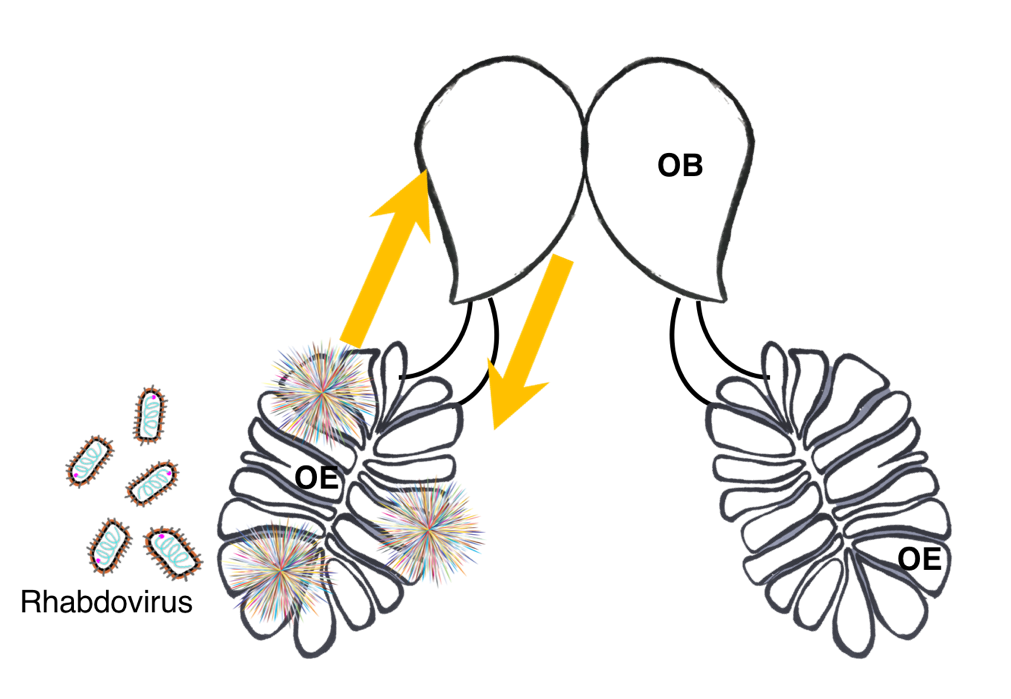
The olfactory organ is responsible for chemical detection of odorants in the environment. Olfactory sensory neurons are also directly exposed to many pathogens. Rapid and effective immune responses in the olfactory periphery are critical to stop pathogen invasion into the brain. The goal of this project is to unravel new mechanisms of neuroimmune communication in the olfactory-brain axis using teleost fish as models. We use both rainbow trout and zebrafish to investigate how neurons and immune cells respond to viruses in the olfactory epithelium (OE) and along the olfactory nerve and what signals travel to the olfactory bulb (OB) in the brain. To answer this question, we use diverse cell and molecular biology tools including transgenic zebrafish models, confocal microscopy, two-photon live imaging of immune cells, gene expression and behavioral assays.
9. Conversion of Natural Gas into Fuels and Chemicals
PI: Prof. Abhaya K. Datye, Distinguished Regents' Professor (Chemical and Biological Engineering and Center for Microengineered Materials)
Lab webpage
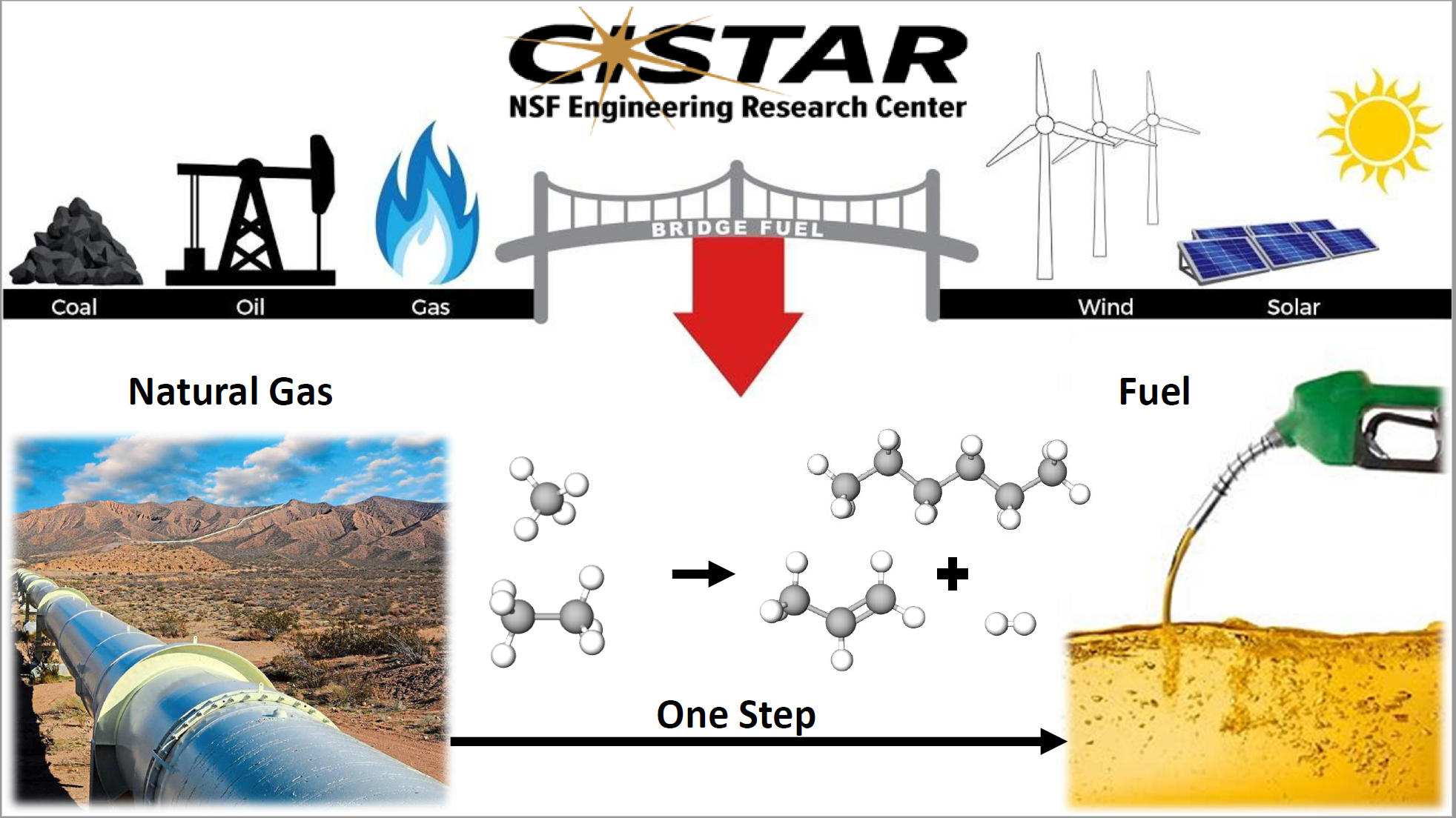
As the U.S. aims to cut down emission of greenhouse gases to combat global warming and climate change, there is a need for a bridge fuel, one based on natural gas, which is plentiful due to the shale boom. Natural gas helps to cut down harmful emissions of CO2, since it has the highest ratio of hydrogen to carbon, among the various fossil fuels we use today. The development of hydraulic fracking has led to the production of enormous quantities of hydrocarbons, but there are no pipelines to transport the gas to the refinery or chemical plants. The goal of the research supported by the NSF Engineering Research Center (ERC) CISTAR (Center for Innovative and Strategic Transformation of Alkane Resources) is to convert the gas into liquids for which there is a high demand. The research will involve the synthesis and characterization of catalysts that will conduct reactions such as alkane dehydrogenation as well as reforming. This research will be carried out in the catalysis laboratory which is well equipped for the synthesis and testing of catalysts. For example, one focus of our research is to convert greenhouse gases such as CH4 and CO2 into clean H2. Another focus is to use renewable energy for providing heat for these chemical reactions. We are working with the solar technology program at Sandia to develop methods to transfer heat directly to the natural gas components, eliminating the current inefficient methods of heating the gas by burning methane on the the outside of reactor tubes. In our research, we use tools such as aberration corrected electron microscopy to gain insight into the atomic structure of catalysts and to engineer them. Our goal is to make the catalysts become more selective while enhancing their thermal stability and regenerability, so as to conserve resources, such as the rare earths and platinum group metals that are used in these catalysts.
10. Using Machine Learning to Enable Large-Scale Electron Density Predictions of Biological Macromolecules
PI: Prof. William Bricker (Chemical and Biological Engineering)
Lab webpage
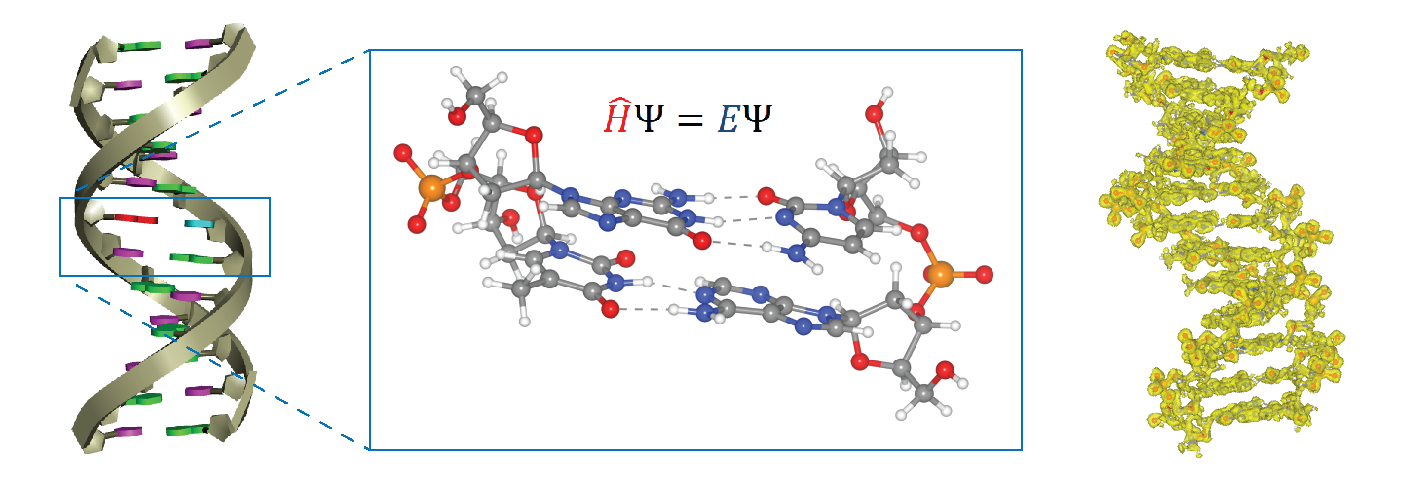
In the Bricker group we are interested in exploring the structure-to-function relationships of biological macromolecules, such as proteins and nucleic acids. In natural photosynthesis, protein scaffolds are seen to enable efficient light-harvesting and energy transfer by geometrically structuring photoactive molecules. A technique called DNA origami utilizes crossover strands between DNA duplexes to create synthetic 2D and 3D scaffolds, and is seen as a potential method for creating artificial photosynthetic networks. While ab initio quantum chemistry is a powerful tool for the calculation of molecular properties, it does not scale well for large biological macromolecules, such as proteins or nucleic acids. A current project in the Bricker group utilizes machine learning to efficiently scale up quantum calculations of arbitrarily-sized DNA sequences by adequately sampling the electronic structure from smaller fragments of DNA. We plan to utilize this machine learning method to simulate accurate dynamics of biological macromolecules at the electronic level. A ROSE scholar in our group can expect to learn and perform computational chemistry methods such as molecular dynamics and ab initio quantum chemistry, as well as contribute towards an electronic structure data set that can be utilized towards improving this machine learning technique.
11. Application of Limestone for Metal Remediation in Sites Affected by Mining Legacy
PIs: Dr. Mehdi Ali (Earth & Planetary Sciences and Analytical Chemistry Laboratory) and Prof. Jose Cerrato (Civil, Construction & Environmental Engineering)
Lab webpage
Drs. Ali and Cerrato have collaborated for 8 years investigating the transport and remediation of metals in the environment. The specific project listed in this application focuses on the use of naturally occurring limestone for metal remediation in sites affected by mining legacy. This work has been developed in partnership with Native American communities in Laguna, Pueblo and Navajo Nation affected by uranium mining legacy. Our group has reported that metal mixtures of uranium, arsenic, and vanadium have been detected in waters located in sites affected by uranium mining legacy at concentrations that exceed the maximum contaminant level (MCL) established by the US Environmental Protection Agency (USEPA). Limestone is a commonly occurring natural mineral in the Southwestern US that could be accessible to these communities. Our group is currently investigating how limestone can react in environmentally relevant conditions to these sites to facilitate metal uptake to remediate waters from these sites. This research will integrate aqueous chemistry techniques such as inductively coupled plasma (ICP) and ion chromatography (IC) which are available at the Analytical Chemistry Laboratory managed by Dr. Mehdi Ali. Experiments will be conducted with packed columns with limestone of different particle sizes. Simulated or water from natural resources of the affected areas will be leached through the columns. Leachate will be collected and analyze to determine limestone removal efficiency of metals. Additionally, we will characterize solids using microscopy and spectroscopy facilities available at different facilities at UNM.
12. Development of Dark and Light-Activated Antimicrobial Materials
PI: Prof. David Whitten (Chemistry & Chemical Biology; Chemical & Biological Engineering; Center for Biomedical Engineering)
Lab webpage
Research in the Whitten group focuses on the synthesis, study and applications of new compounds and materials for antimicrobial activity against microbial pathogens, including enveloped and non-enveloped viruses, bacteria and bacterial biofilms, and fungi such as yeast and Candida albicans fungi. For several of these pathogens there is strong antimicrobial activity both in the dark and under irradiation with visible and/or ultraviolet irradiation. We have studied the mechanisms of the antimicrobial activity and find that there are significant differences between the dark and light activated processes. For example, with bacterial pathogens the dark processes involve association of the antimicrobial oligomers and pathogens (typically cationic phenylene ethynylene or polythiophene derivatives), with the phospholipid membranes that surround the cytoplasm either forming pores or partially dissembling the biomembrane and allowing the cytoplasmic contents to drain from the cells. In contrast, the light activated activation leads to an excited triplet state of the “segment chromophore” of the component oligomer or polymer, that subsequently transfers energy to ground state oxygen leading to the formation of excited singlet oxygen that can enter the cytoplasm and cross link component proteins and nucleic acids, forming insoluble material inside the cell and killing the pathogen in the process. There are also substantial differences when these materials interact with viral pathogens. For non-enveloped viruses there is strong inactivation of the viruses studied to date in both light and dark environments, while for enveloped viruses such as SARS-CoV-2 there is no net activation in the dark; however the association of the antimicrobial substance leads to a docking, that enables very efficient inactivation of the enveloped virus, presumably via the same photosensitized generation of singlet oxygen that can then infiltrate and inactivate the virus particle.
13. Computational Approaches to Studying Evolution in Changing Environments
PI: Prof. Davorka Gulisija (Biology and Computer Science)
Lab webpage
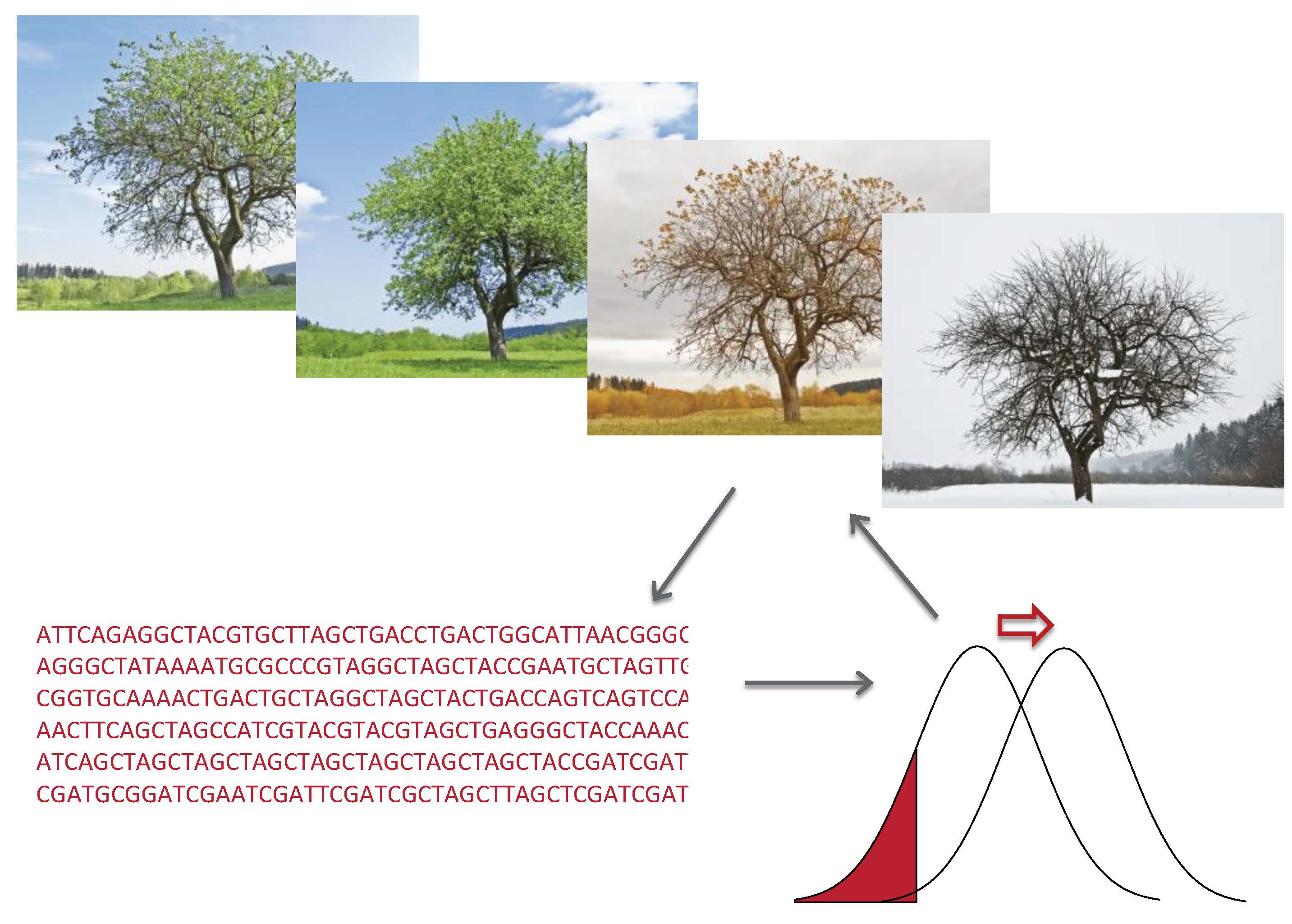
Our lab uses a combination of mathematical modeling and computer simulations to uncover the mechanisms of rapid evolution (occurring on contemporary timescales) to changing environments. Rapid evolution underlies some of the biggest problems that humanity faces today, including viral evolution, antibiotic resistance, biological invasions, microbiome shifts, and response to climate change. Despite its tremendous importance, we understand surprisingly little about this phenomenon. In our lab, we model natural populations in silico and execute forward-in-time computer simulations to understand how systems will behave in changing conditions under a variety of naturally plausible conditions. Some of our current projects examine how genetic interactions modulate the rate of evolution in changing environments and how genetically based phenotypic plasticity arises and affects organismal and population response to rapid environmental change.
14. Engineering Nanoparticle Surface Chemistry for Biomedical Applications
PI: Prof. Achraf Noureddine (Chemical & Biological Engineering)
Lab webpage

The goal of this project is to develop a relationship between nanoparticle surface chemistry and in vivo fate. Contact of nanoparticles with serum upon in vivo administration induces their coating by a surrounding protein corona that influences their fate in the body. We hypothesize that the content of the protein corona will be dictated by the unique properties of the nanoparticles’ surface functions, such as the presence or absence of chain unsaturation or steric cycle, and atomic ratio of heteroatoms (nitrogen or oxygen) to carbon. Project aims include: (1) establish a relationship between biodistribution of nanoparticles and their surface functionality using elemental analysis of indium; and (2) engineer surface functionality to increase nanoparticle accumulation in cancer-bearing organs.
15. Conjugated Electrolytes for Biosensing, Theranostic, and Biocidal Applications
PI: Prof. Eva Chi (Chemical & Biological Engineering)
Lab webpage
Conjugated polyelectrolytes (CPEs) are versatile compounds with a hydrophobic, pi-conjugated backbone and charged/hydrophilic side and end groups. This architecture renders CPEs water soluble, while retaining compelling optical and electronic properties of pi-conjugated polymers. We are exploring the properties of poly-phenylene ethynylene (PPE)-based CPEs, both polymers and oligomers for biomedical applications. Several oligomers (OPEs) have been identified to be sensitive and selective fluorescence sensors for the aggregated conformations of amyloid proteins that are linked to neurodegenerative disorders such as Alzheimer’s and Parkinson’s diseases. Additionally, the selective binding of OPEs to aggregates also turns-on the photosensitizing activity of the OPEs and result in subsequent partial oxidation of the bound aggregates, which can potentially lead to their clearance from the brain. We have also extensively studied CPEs as biocides and have shown that a number of polymers and oligomers exhibit remarkable near-UV/visible light-activated biocidal activity against a broad spectrum of microbes, including bacteria, bacteriophages, fungi, spores, and the SARS-CoV-2 coronavirus. The compounds are also selective, exhibiting low toxicity towards mammalian cells. We are working on investigating the mechanism of action of CPEs and further developing these materials for early disease detection and disinfection applications.
16. Identification of Plastic Products of Potential Health Concerns From Open Dumping and Burning of Wastes Using Community-Engaged Research
PI: Prof. Eliane El Hayek (College of Pharmacy– Department of Pharmaceutical Sciences)
Lab webpage
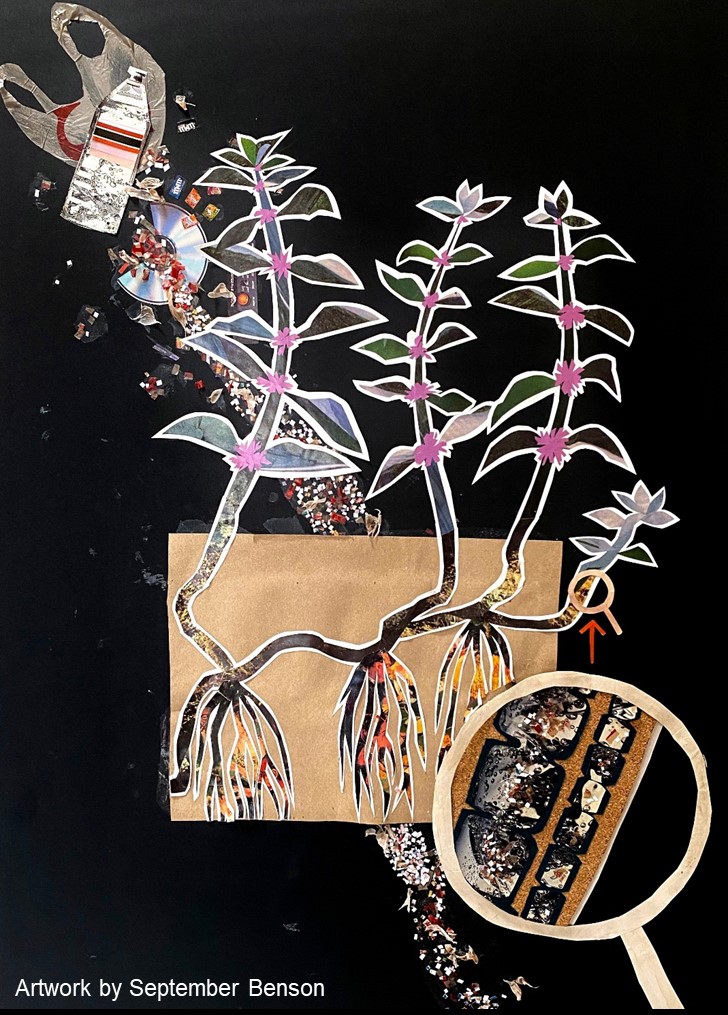
The plastic contamination from open dumping and burning processes represents a potential concern in tribal lands where these activities are commonly practiced due to a lack of adequate waste management. Such improper waste management can lead to the emission of air pollutants and to the contamination of soil and plants by toxic products that can pose potential health risks to communities located nearby. Potential toxic products include volatile organic compounds (VOCs) and the secondary microplastics, which are generated by the fragmentation of larger plastic pieces. The goal of this project is to identify the bioaccumulation of the generated plastic products in the dominant plants that are widely grown in the studied areas to understand the bioavailability and toxicity of burned plastics waste. We use state-of-the-art chemical and spectroscopy techniques to provide a comprehensive dataset on the concentrations and the chemistry of the bioaccumulated plastic contaminants. This research contributes relevant information to mitigate human exposures to toxic products that are released in the environment following open dumping and burning activities. Our research is synergetic with the overall goal of the Native Environmental Health Equity Center that is dedicated to understanding the disparate environmental and health impacts of wastes dumping and burning in tribal communities.
17. Shallow Seismic Imaging for Flood Plain Structure and Environmental Monitoring
PI: Prof. Lindsay Lowe Worthington (Earth & Planetary Sciences)
Lab webpage
Our group uses seismology to examine the structural evolution of the Earth’s crust and sedimentary processes at a variety of scales. We pursue questions about earthquakes on active continental margins, interaction between extension and magmatism during continental break-up, and how rapid sedimentation affects faulting on glaciated margins. Our research often blends imaging with stratigraphic and structural modeling as well as complementary geophysical modeling using gravity and magnetics to untangle the tectonic histories of our study areas. Recently, our work has expanded to incorporate new technologies for densely-spaced seismic arrays for basin imaging and environmental monitoring. The goal of this summer project is to develop a subsurface seismic velocity model of the Rio Grande flood plain in north-central Albuquerque. This model will become part of a larger time series showing changes in material properties of river-bounding rocks, soils and vegetation due to both climatic and anthropogenic forcing.
18. Microbially Mediated Resistance to Climate Stress in Dryland Soils
PI: Prof. Jennifer Rudgers (Biology; Sevilleta Long Term Ecological Research)
Lab webpage
19. Multiscale Modeling of Complex Molecular and Materials Systems
PI: Prof. Susan Atlas (Chemistry & Chemical Biology; Physics & Astronomy; Center for Quantum Information and Control)
The structure, energetics, and dynamics of atomic-scale systems is governed by the laws of quantum mechanics. Research in our group utilizes mathematical and computational techniques to understand how quantum effects impact chemical bonding, interactions, and the statistical mechanics of molecules and materials. Our work connects models at three different length scales: interactions between electrons, as modeled through density functional electronic structure theory; interactions between atoms, as modeled through classical molecular dynamics simulation; and statistical simulations of transitions between effective kinetic states. By using principled approaches to couple interactions at multiple length scales, we seek to develop accurate, predictive models of complex biophysical, biochemical, and materials systems, with applications to rational drug and materials design. Examples of current projects in our group that Scholars can be involved in include atom-in-molecule modeling of charge-transfer force fields; machine learning methods for elucidating the dynamics of the molecular motor protein kinesin as a prototypical ‘nanobot’; dynamical simulations to elucidate the role of mutations in the SARS-CoV-2 spike protein; computational design of high-entropy materials; and methods for implementing correlated electronic structure calculations on emerging quantum computing architectures.
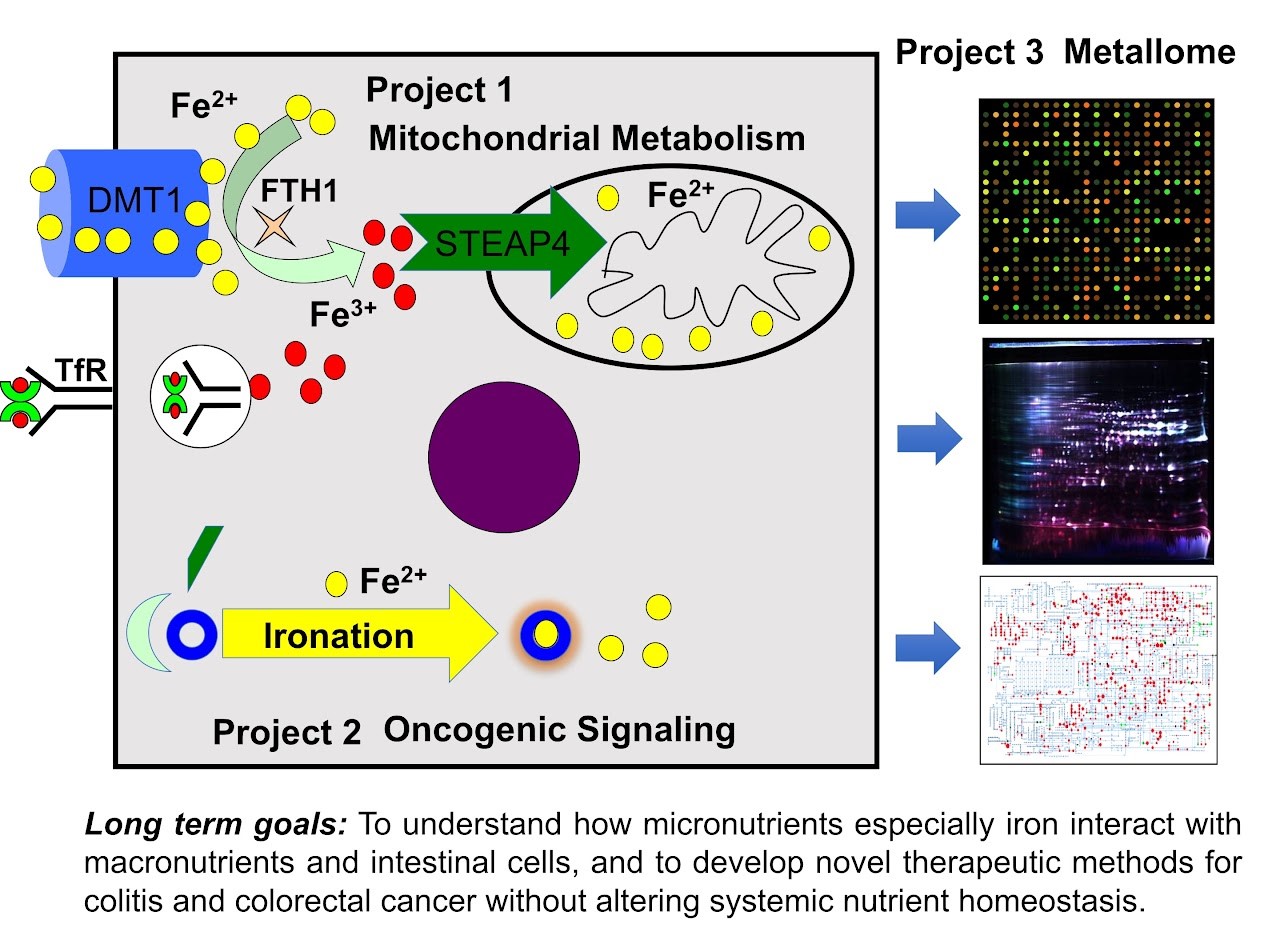
20. Unraveling the Role of Environmental Toxic Exposures in Colon Inflammation and Tumorigenesis
PI: Prof. Xiang Xue (Biochemistry Molecular Biology)
Our research focuses on how toxic environmental exposures, particularly metals and microplastics, contribute to gastrointestinal diseases like colitis and colorectal cancer. By investigating how cells respond to metals, especially iron and manganese, in inflammatory and cancerous states, we aim to uncover novel therapeutic targets. Additionally, we explore how microplastics, a growing environmental concern, may accelerate colon tumor progression, filling a critical gap in understanding the link between environmental toxins and cancer risk.
21. Computational design of therapeutic peptides
PI: Dr. Xiaorong Liu (Chemistry & Chemical Biology)

Peptides have emerged as one of the most versatile and promising classes of therapeutic molecules, due to their unique advantages such as recognition of large and flat surfaces, high specificity, weak unintended immunogenicity, and low production cost. However, refinement of the initial peptide design can be extremely challenging. The sequence space grows exponentially with the peptide length. More importantly, peptides are highly flexible and often induce large receptor conformational changes upon binding. To efficiently search the combinatorial sequence space and complex conformational space at the same time, we will develop and deploy highly accurate and high throughput computational methods to tackle this challenging problem. In this project, we aim to design highly potent and selective peptide inhibitors targeting DnaK, an Hsp70 molecular chaperone in E. coli that is essential for protein quality control. It is also an antibiotic target for treating infections of multidrug-resistant Gram-negative bacteria, which causes a lot of illnesses and deaths each year in the United States.
22. From Dynamic Proteins to Silent Pollutants: A Molecular Journey Through Life, Health, and the Environment
PI: Prof. Changjian Feng (College of Pharmaceutucal Sciences)
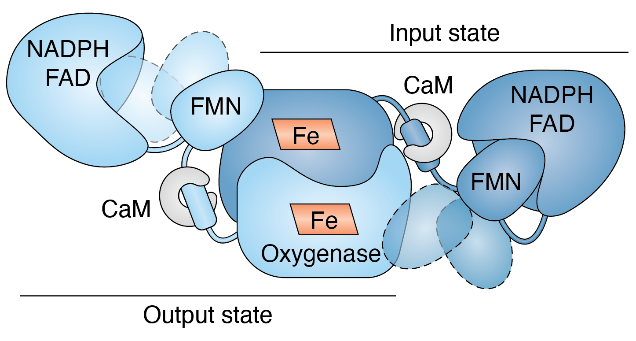
The Feng lab studies how enzymes — tiny, flexible machines inside our bodies — carry out essential functions by changing shape and transferring electrons between different parts of the molecule. This process, called electron transfer, is vital for life: it powers how our cells produce energy, break down nutrients, eliminate toxins, and communicate through chemical signals. One major focus of our lab is on nitric oxide synthases, enzymes that produce nitric oxide — a small but powerful gas molecule that helps regulate blood pressure, immune defense, and brain signaling. These enzymes don’t just sit still; they move, shift, and flex in specific ways to guide when and how electron transfer happens. This concept, known as functional protein dynamics, can be thought of like a transformer toy or robotic arm that changes shape to perform its task. In the Feng Lab, we use advanced tools like laser spectroscopy, magnetic resonance, and computer modeling to explore how proteins move and how these movements affect their function.
Beyond this core work, Dr. Feng also directs the Integrative Molecular Analysis Core at UNM, where we use cutting-edge mass spectrometry to detect and analyze molecules in biological and environmental samples. One of the most exciting applications is mass spectrometry imaging, which allows us to create detailed maps showing where specific molecules are located in tissues—whether it’s a drug, a protein, or a pollutant. The mass spectrometry technology is directly relevant to everyday life. For example, mass spectrometry is used to detect and map environmental contaminants — such as PFAS (so-called “forever chemicals”) — in water samples and household environments, providing critical insights into patterns of exposure and potential health risks. These methods help us understand how invisible chemical exposures in air, water, or food may impact health, particularly in communities across New Mexico.
Participants will have the opportunity to engage with both the biological and analytical dimensions of the research. This may include observing how protein dynamics are measured, exploring how mass spectrometry is used to detect real-world contaminants, and learning techniques that can be translated into classroom teaching. No prior laboratory experience is required—only curiosity, creativity, and a passion for making science relevant and inspiring. The Feng lab provides a supportive environment for growth as both a researcher and an educator.
23. Glucose regulates cell mechanics and function through AMPK and PKA signaling pathways in TNBC
PI: Prof. Tae-Hyung Kim (Pathology)

Regulation of cellular mechanical properties, or mechanics, by cytoskeleton rearrangement and motor protein activity is an energy-extensive procedure, but plays critical roles in cancer cells and immune cells function. However, there is a knowledge gap on what external biochemical signaling cues can regulate cell mechanics and what are the underlying molecular mechanisms in breast cancer cells and macrophages. Identification of these signaling cues from tumor microenvironment and its detailed molecular mechanisms will deepen our understanding to breast cancer metastasis and potentially provide a novel therapeutic target.
Recently, we discovered that extracellular glucose regulates cellular mechanics and function in human breast cancer cells and macrophages. To further understand its molecular mechanisms, we utilize various cell and molecular biology tools as well as cell mechanotyping tools such as atomic force microscope (AFM).
24. Designing and Manufacturing Advanced Alloys for Extreme Environments
PI: Prof. Panjak Kumar (Mech. Eng.)
 Our research focuses on creating and improving metallic materials that can withstand some of the most extreme conditions found in engineering and technology. These include high-performance alloys such as titanium alloys, Inconel, refractory alloys, and newer multi-component alloys designed for cutting-edge applications. Such materials are essential for industries like aerospace, space exploration, nuclear energy, and advanced manufacturing—where components must perform reliably under intense heat, stress, and corrosive environments.
Our research focuses on creating and improving metallic materials that can withstand some of the most extreme conditions found in engineering and technology. These include high-performance alloys such as titanium alloys, Inconel, refractory alloys, and newer multi-component alloys designed for cutting-edge applications. Such materials are essential for industries like aerospace, space exploration, nuclear energy, and advanced manufacturing—where components must perform reliably under intense heat, stress, and corrosive environments.
In our lab, we use a combined approach of advanced computer modeling and carefully designed experiments to understand how metals behave at the microscopic and atomic levels. We investigate how different elements interact when combined, how their internal structure evolves under extreme conditions, and how these changes affect strength, toughness, and long-term durability.
To make and test these materials, we use both conventional processing methods and modern manufacturing techniques such as additive manufacturing (3D printing). This allows us to produce custom alloy samples with controlled compositions and microstructures, then evaluate their performance under simulated service conditions. By linking fundamental scientific understanding with practical engineering solutions, our work aims to develop materials that are not only stronger and more durable, but also more predictable in how they perform over time.
Ultimately, our goal is to enable safer, more efficient, and longer-lasting technologies that can meet the challenges of the future—whether that’s flying faster, operating at higher temperatures, or surviving in the harsh environment of space.
25. Olivier Group from Fundamental to Applied Sciences
PI: Prof. Jean-Hubert Olivier (CCB)
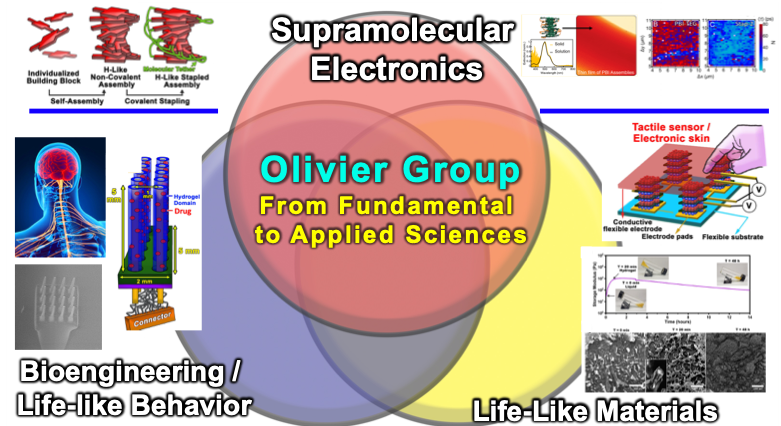
At the intersection of synthetic chemistry, physical chemistry, and materials science, the Olivier laboratory tackles modern societal challenges in energy and healthcare. Deviating from conventional approaches, we develop molecular tools to create entirely new classes of materials for applications that encompass solar energy capture, conversion, storage, spintronics, piezoelectricity, tissue regeneration, and neural interfaces.
